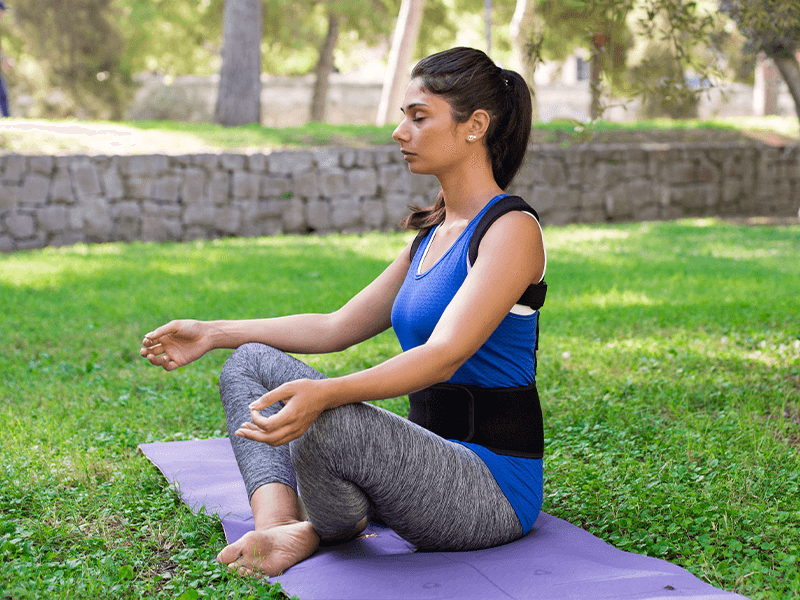Search
Find a Physician
Medically Reviewed by
Christopher Castro, DOBlog
Sep 30, 2025
A person struggling with poor posture often feels it in more ways than one. Their back aches, their shoulders slump, and even their self-confidence takes a hit. They begin to wonder—do posture correctors work as well as the ads promise? This question lingers as the frustration grows.
The search for relief becomes more than just about comfort—it’s about reclaiming health and presence. Slouched posture doesn’t only cause stiffness; it can affect breathing, energy, and overall mood. So, when posture correctors pop up in their feed, the idea of a quick fix feels incredibly tempting.
Some people don’t think twice. They click “buy now” and hope for instant improvement. Others, though, hesitate. They want to know if these devices are more than just clever marketing and whether the investment will pay off in real results.
Spine health is at the core of your overall well-being, yet it’s one of the areas most people ignore until the pain becomes unavoidable. When you slouch or hunch forward for long periods, the natural alignment of the spine is disrupted. Over time, this imbalance puts unnecessary pressure on the vertebrae, discs, and surrounding muscles, leading to discomfort that doesn’t simply vanish with rest.
Poor posture doesn’t just hurt your back—it sends ripples throughout your body. The tension can spread to your shoulders, neck, and even cause headaches. Misalignment can also affect circulation, digestion, and lung capacity, making you feel more fatigued than you realize. The longer this continues, the more your body adapts to an unhealthy stance, making correction harder.
It’s no wonder people turn to posture devices in search of help. The question then becomes not only about relief but long-term correction—do posture correctors work in improving the way your spine supports your body, or are they simply a temporary crutch?
When discussing the various types of posture, it is helpful to first understand what a healthy one looks like. Ideally, your ears, shoulders, hips, knees, and ankles should align in a straight line when viewed from the side. This alignment reduces strain on your muscles and joints while keeping your spine in its natural curves.
Micro correctors can help you become more aware of these issues, but they should not be seen as a complete solution.
Doctors generally acknowledge that posture correctors can provide short-term relief and reminders to sit or stand straighter, but they stress that they are not a cure. Medical professionals usually recommend pairing them with exercises, lifestyle changes, and physical therapy to strengthen muscles and promote long-term alignment. Ultimately, posture correctors are most useful when used as part of a broader strategy for better spinal health.
Before you even think about buying a posture brace, it’s worth exploring natural ways to improve your alignment. Your body responds well to movement, and simple routines can make a big difference. One of the most effective starting points is incorporating upper back stretches into your daily life, which helps release tension and reset your spine’s position.
Strengthening your back muscles is just as important. Exercises like rows, planks, and reverse flys build the stability your body needs to hold itself upright without constant reminders. When your muscles are strong enough, you’ll find that good posture feels less like a chore and more like your default stance.
Small lifestyle changes also play a role. Setting up an ergonomic workspace, taking breaks from sitting, and practicing mindful alignment during daily activities can all improve posture naturally. These habits create a foundation that makes any external support, like a brace, far more effective.
One of the biggest benefits of posture correctors is their ability to provide immediate feedback. When you start to slouch, these devices gently pull your shoulders back, making you aware of the habit and encouraging you to sit or stand straighter. This instant reminder helps break poor posture cycles that many people fall into unconsciously. Over time, the consistency of this feedback can retrain your body to adopt healthier alignment naturally.
Another key advantage is pain reduction. By improving alignment, posture correctors can relieve strain on the back, shoulders, and neck. This relief doesn’t just make daily life more comfortable—it can also help you stay productive and avoid fatigue. Many people notice that headaches, stiffness, and tension ease up when their posture improves. This functional support becomes especially important if you spend long hours sitting at a desk or looking at screens.
People also turn to these devices for confidence. Standing taller and straighter not only changes how you feel physically but also how you present yourself to others. That sense of improved presence can boost self-esteem in social and professional settings. So, when people ask, do posture correctors work, the answer often lies in the combination of physical and psychological benefits they deliver.
At the same time, some prefer to explore whether posture braces work as a more supportive solution, especially if they need extra stability. Braces can offer firmer correction but may limit movement, making them better suited for specific situations rather than all-day wear.
While posture correctors can be helpful, they’re not without drawbacks. Over-reliance on these devices can cause your muscles to become lazy, as the brace does the work your body should be doing. This can actually weaken your core and back muscles if used for too long.
Another issue comes with discomfort and skin irritation, which are common posture corrector side effects when worn for extended periods. Some users also find them restrictive, limiting natural movement. Due to these concerns, posture correctors should be viewed as temporary aids, best used in conjunction with exercises and lifestyle changes for lasting results.
So, do posture correctors work? The answer is yes—but only to a point. They can provide valuable reminders, ease pain, and boost confidence, but they’re not a permanent fix. Long-term improvement stems from strengthening muscles, practicing good habits, and maintaining consistency. Think of correctors as a tool, not a cure.
Wondering if posture correctors are right for you? See an expert at the Orthopedic Institute of NJ to get personalized advice and lasting relief.
OINJ PHYSICIAN’S ADVICE
The best way to correct posture is by optimizing how we sit and stand. Since people are sitting more than ever, it’s easy to slouch, putting pressure on the low back and neck. I educate patients on sitting with the pelvis tilted forward, shoulders back, and screens at eye level to reduce stress on the neck and low back. If the neck (cervical spine) still bothers them, I may suggest a posture aid briefly, as long use can weaken muscles.
Christopher Castro, DO
Physiatrist

